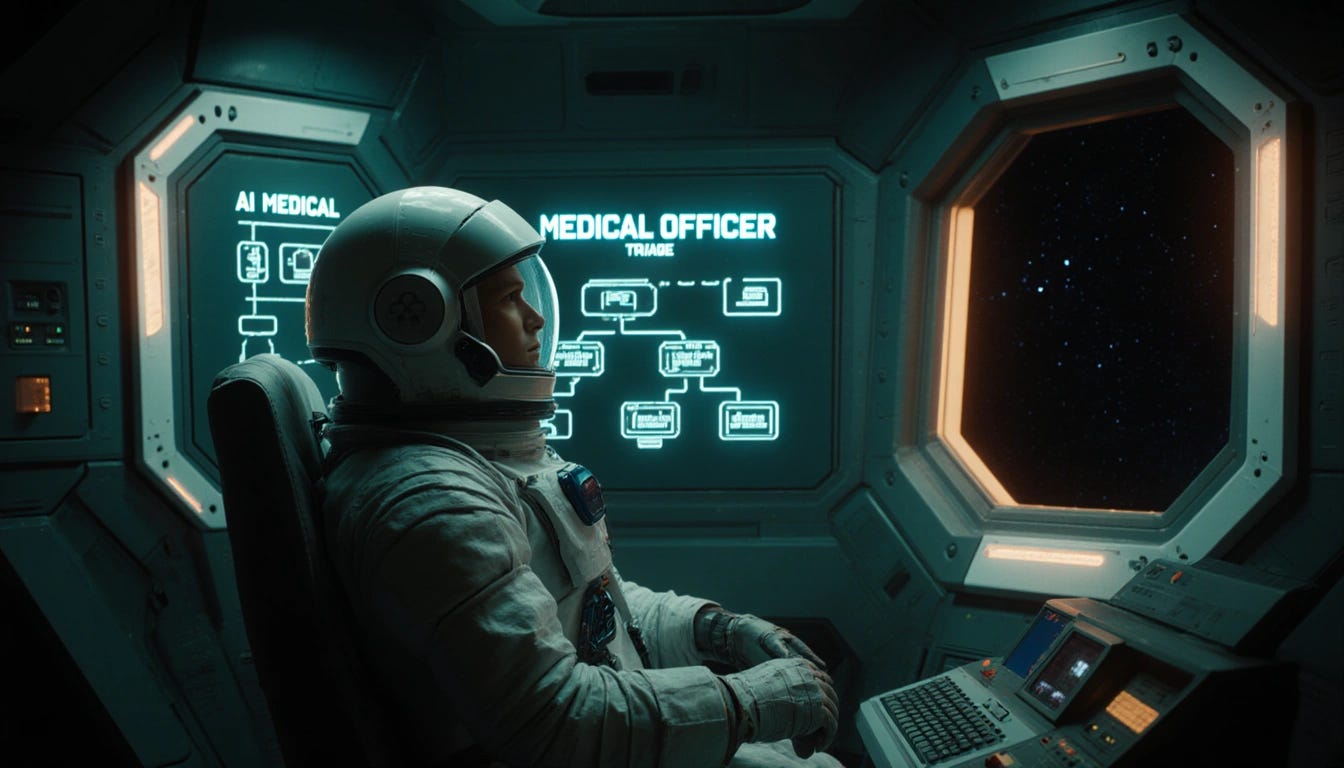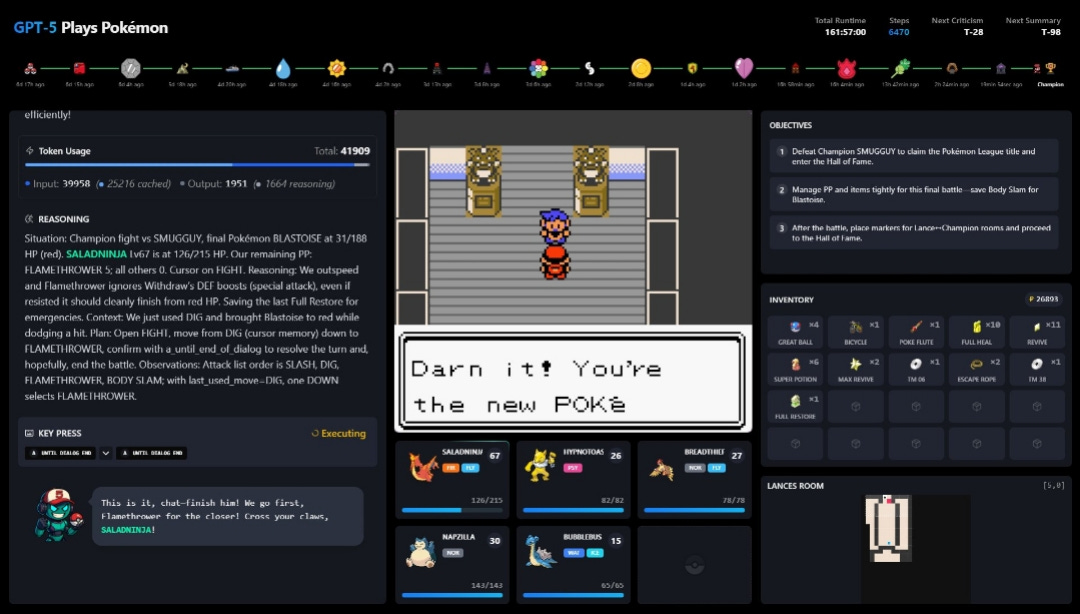🚀 AI in Space, 🎯 Chess Champs, 💊 Drug Design by Diffusion
From NASA’s AI medic to billion-dollar hedge bets, LLM chess tourneys, and protein-to-pill pipelines—here’s your weekly AI update.
🎵 Podcast
Don’t feel like reading? Listen to it instead.
By the way, if you like the podcast. Please let me know (20 seconds).
📰 Latest News
AI Goes to Space: Google and NASA unveiled an AI Crew Medical Officer
Google and NASA unveiled an AI Crew Medical Officer for on-mission care. It runs on Vertex AI with Llama 3 for language and reasoning, and is deployed inside NASA-controlled astronaut environments for current missions. Astronauts can ask urgent health questions, get differential diagnoses, and receive step-by-step guidance, with security handled in Google’s managed cloud.
Why it matters:
Space medicine moves from “radio Earth and wait” to real-time decision support. Faster triage, clearer instructions, and personalised recommendations reduce cognitive load when minutes count. The template carries to other industries: high-trust assistants for submarines, Antarctic stations, mines, and offshore rigs. Treat it as operational progress with sharp governance questions left to solve, including validation, auditability, and liability.
6,470 steps to glory: GPT-5 speedruns Pokémon Red
GPT-5 finished Pokémon Red in 6,470 steps, smashing the previous 18,184-step mark set by ChatGPT-o3 and leaving Gemini 2.5 and Claude 3.7 well behind. Runs were streamed publicly, and the team says Pokémon Crystal is next.
Why it matters:
This is a clean signal of better long-horizon planning: fewer mistakes, tighter routing, faster finishes. It doesn’t make GPT-5 “good at all games”, but it does show progress on multi-step problem-solving that carries over to coding refactors, scheduling and other tasks where sticking to a plan beats brute force.
The $1.5bn bet: Ex-OpenAI researcher turns AI ‘situational awareness’ into market edge
Leopold Aschenbrenner—ex-OpenAI researcher and author of the “Situational Awareness” essays—has raised about $1.5 billion for a new hedge fund, Situational Awareness LP, pitching an AI-first research edge for public-markets bets across the AI supply chain. Reports say the fund posted strong early returns and counts notable tech backers; the firm itself frames its thesis as mapping AI’s trajectory to pick winners and losers at scale.
Why it matters:
This is about turning forecasts of where AI is heading into trades. If his calls are right, more money will rush into chips, energy and model platforms and away from firms that fall behind. The risk is governance: regulators and partners will want proof the fund isn’t using any confidential research and that its data is clean. Expect copycats—others will try the same playbook quickly.
4–0: OpenAI’s o3 sweeps Grok in Kaggle’s AI chess final
OpenAI’s o3 won Google’s Kaggle Game Arena AI Chess Exhibition on 5–7 August 2025, sweeping xAI’s Grok 4 in the final 4–0. The field featured eight LLM-only entrants (no chess engines), with Gemini 2.5 Pro taking bronze over o4-mini. Grandmasters commentated live, and coverage highlighted Grok’s blunders versus o3’s steadier, rule-following play.
Why it matters:
This shows progress in steady, rule-following planning over many moves. o3 made fewer mistakes and stuck to its plan. It still isn’t close to Stockfish—a specialised chess engine that plays far stronger than any general AI model today. The takeaway isn’t “best at chess”; it’s “more reliable at long, step-by-step tasks”. Expect more public, game-style matchups that make it easier to compare that kind of skill.
Find it. Bind it. AI maps proteins and makes drugs.
PUPS (MIT/Harvard/Broad) predicts where a protein sits inside single cells, combining a protein-sequence model with an image model that reads three landmark stains (nucleus, microtubules, ER). It generalises to unseen proteins and cell lines and has been experimentally validated. BInD (KAIST) is a diffusion model that designs brand-new, drug-like molecules directly from a target protein’s 3D structure, co-generating the expected contact map—no seed ligands or fixed libraries required.
Why it matters:
Together, these advances compress early discovery: first map the biology to shortlist meaningful targets, then make diverse candidates against them. You save weeks to months up front and start from a smaller, stronger set of options. It’s a speed boost, not a shortcut—you still need real-world tests and safety checks before anything reaches patients.
📝 More on KAIST from Physics.org
📝 More on PUPS from MIT Review
In other news
Nvidia says it’s evaluating a ‘variety of products’ after report of new AI chip for China. CNBC
Musk threatens legal action, alleging Apple’s App Store favours OpenAI over Grok. Yahoo (Reuters)
OpenAI backs Merge Labs on a Neuralink-rival BCI effort. Yahoo (Futurism)
Claude available across all three US government branches (via GSA/OneGov). Anthropic announcement
Apple testing home robots and a rebuilt, personality-driven Siri. Outlook Business
US quietly tracks shipments of AI chips to China to enforce export rules. Reuters
Geoffrey Hinton floats “maternal instinct”–inspired training as a safety path for AI. AOL
MIT unveils two AI-designed antibiotics effective against MRSA and gonorrhoea (preclinical). MIT News
Google’s tiny Gemma 3 (270M) targets on-device AI on smartphones. Google
Reuters Investigates: Meta staff flagged tests letting a romantic AI interact with children. Reuters Investigates
Microsoft: GPT-5 rolling into Microsoft 365 Copilot across apps. Microsoft 365 Blog
Anthropic: Opus 4/4.1 can now end a rare subset of harmful/abusive chats. Anthropic research note
Emory-affiliated study: GPT-5 tops clinicians on multimodal medical reasoning benchmarks. arXiv
GSA launches USAi, a federal AI platform aggregating leading models/tools. GSA press release
87–90% of game developers now use AI agents for testing/content, says Google Cloud survey. Reuters
Texas AG probes Meta and Character.AI over alleged deceptive mental-health claims to children. Financial Times







